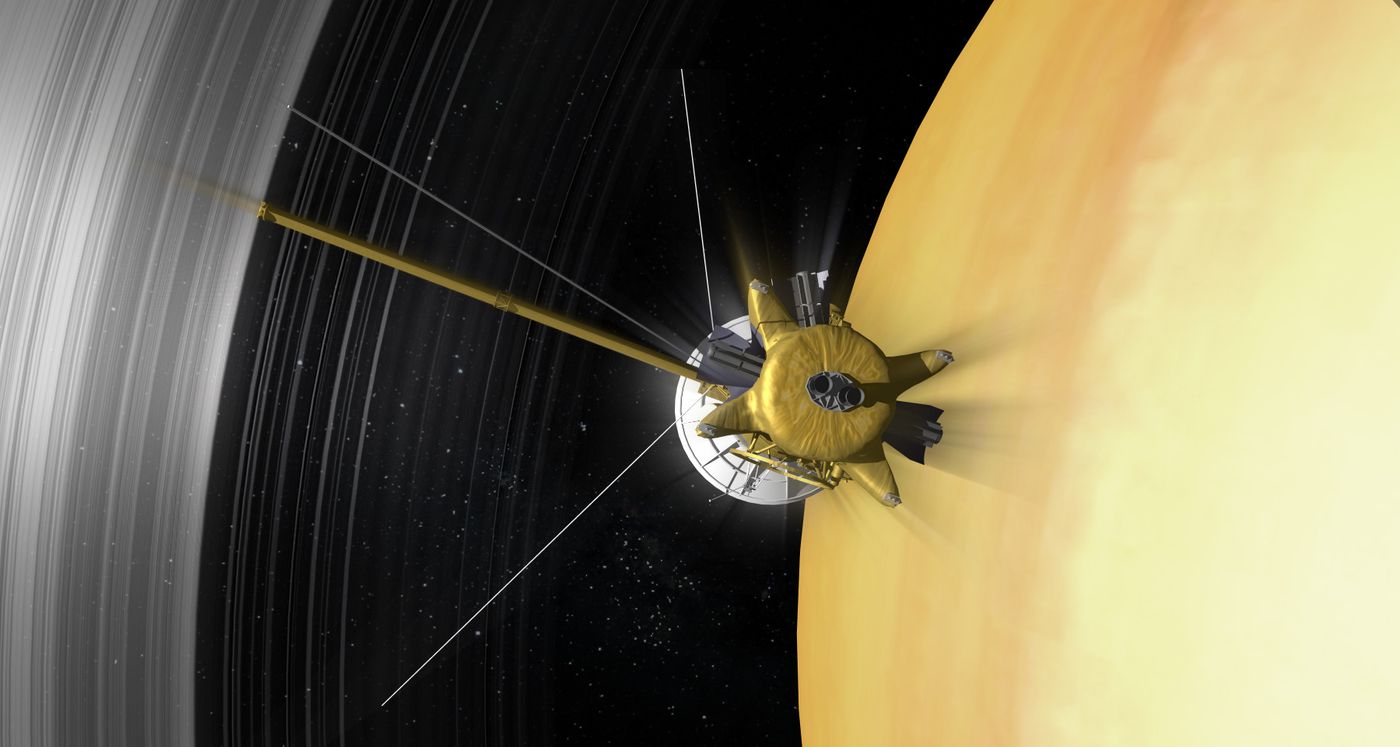Cassini Hit With Fewer Particles Than Expected During Recent Dive
It was just last week that NASA sent its Cassini spacecraft to dive in between Saturn and its rings. The spacecraft is currently scheduled to undergo a grand total of 22 of these maneuvers in what’s being called the “Grand Finale” before the end of the mission in September when Cassini will hurdle into Saturn’s atmosphere to avoid collisions with any of Saturn’s moons as fuel runs out.
Image Credit: NASA
At this point in time, the spacecraft is heading away from Saturn in the middle of its highly-elliptical orbit.
The dive enabled scientists to get high-resolution shots of Saturn and its rings in vivid detail that has never been seen before, but to make it possible, engineers were forced to use Cassini’s dish-shaped antenna as a shield in case it would be met with any speedy debris. Contact with the spacecraft was temporarily lost as the antenna was shifted away from the Earth.
Once we re-established contact with Cassini following the dive, NASA started downloading all of its onboard data and found something that was actually quite surprising…
The entire gap in between Saturn and its rings has much less debris than originally thought. Earl Maize, Cassini’s project manager from NASA’s Jet Propulsion Laboratory in Pasadena, California, calls the region in between Saturn and its rings, “The big empty.”
Among the particles that did come in contact with Cassini were smoke-sized particles, which really aren’t anything to speak of.
One might even say that using Cassini’s antenna as a shield was almost unnecessary, but since it was Cassini’s first dive and we didn’t really know what to expect, scientists weren’t taking any chances.
Cassini will continue to go about its expected route throughout the Grand Finale, but until then, scientists are trying to figure out why there wasn't as much debris as we originally thought there would be.
All these dives should not only provide decent shots of Saturn and its rings, but also help scientists determine the mass, weight, and age of the rings, which has been a mystery for some time now.
Knowing what we do now about the emptiness between the planet and its rings, perhaps Cassini’s antenna could remain in position (pointing towards Earth) for future dives, allowing us to download data in a much more real-time state. Such actions haven’t been approved or confirmed just yet, however.
It should be interesting to see what kinds of additional photographs and information we’ll gain as a result of the near-future dives. Another dive is scheduled for next Tuesday.









